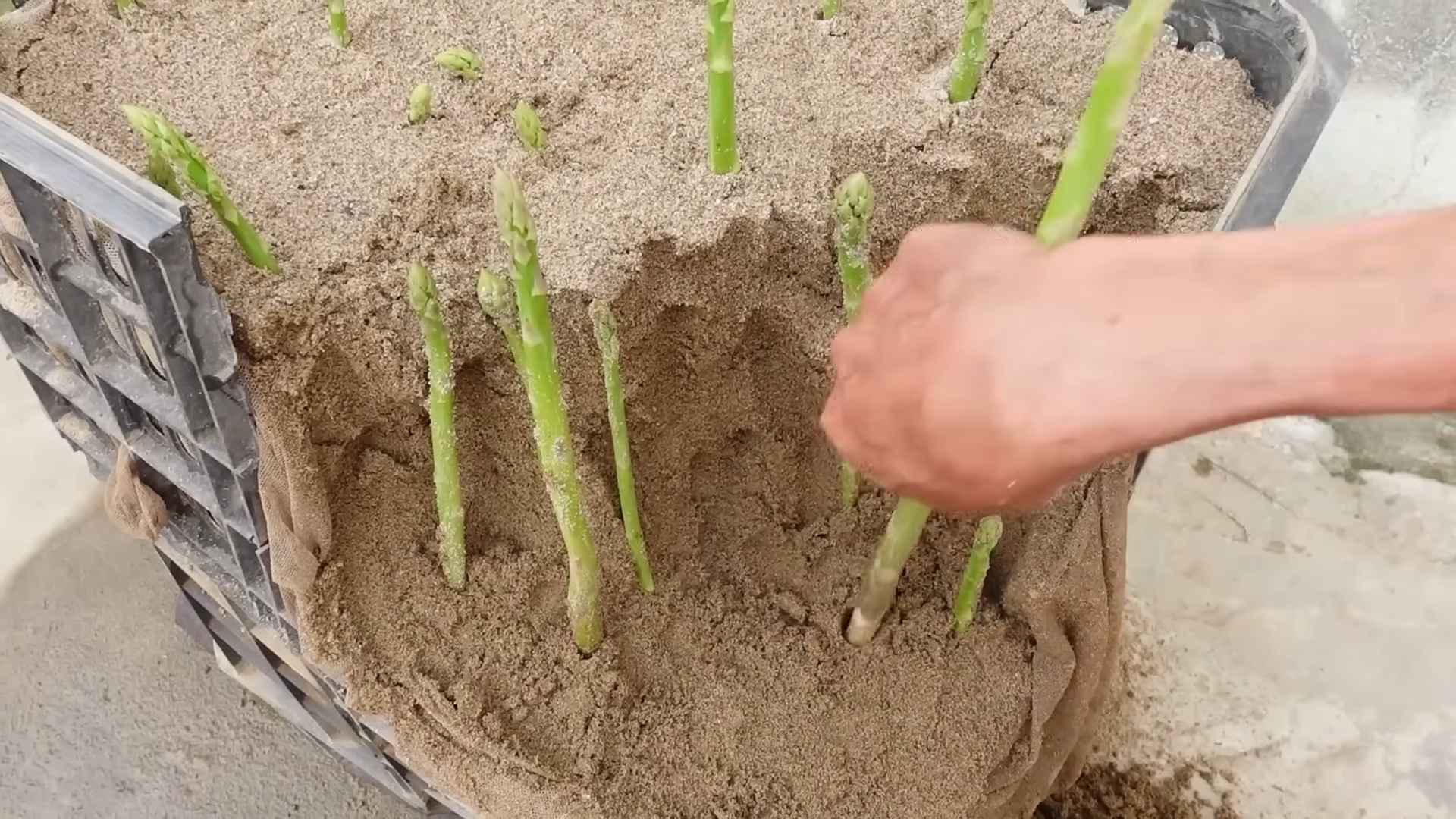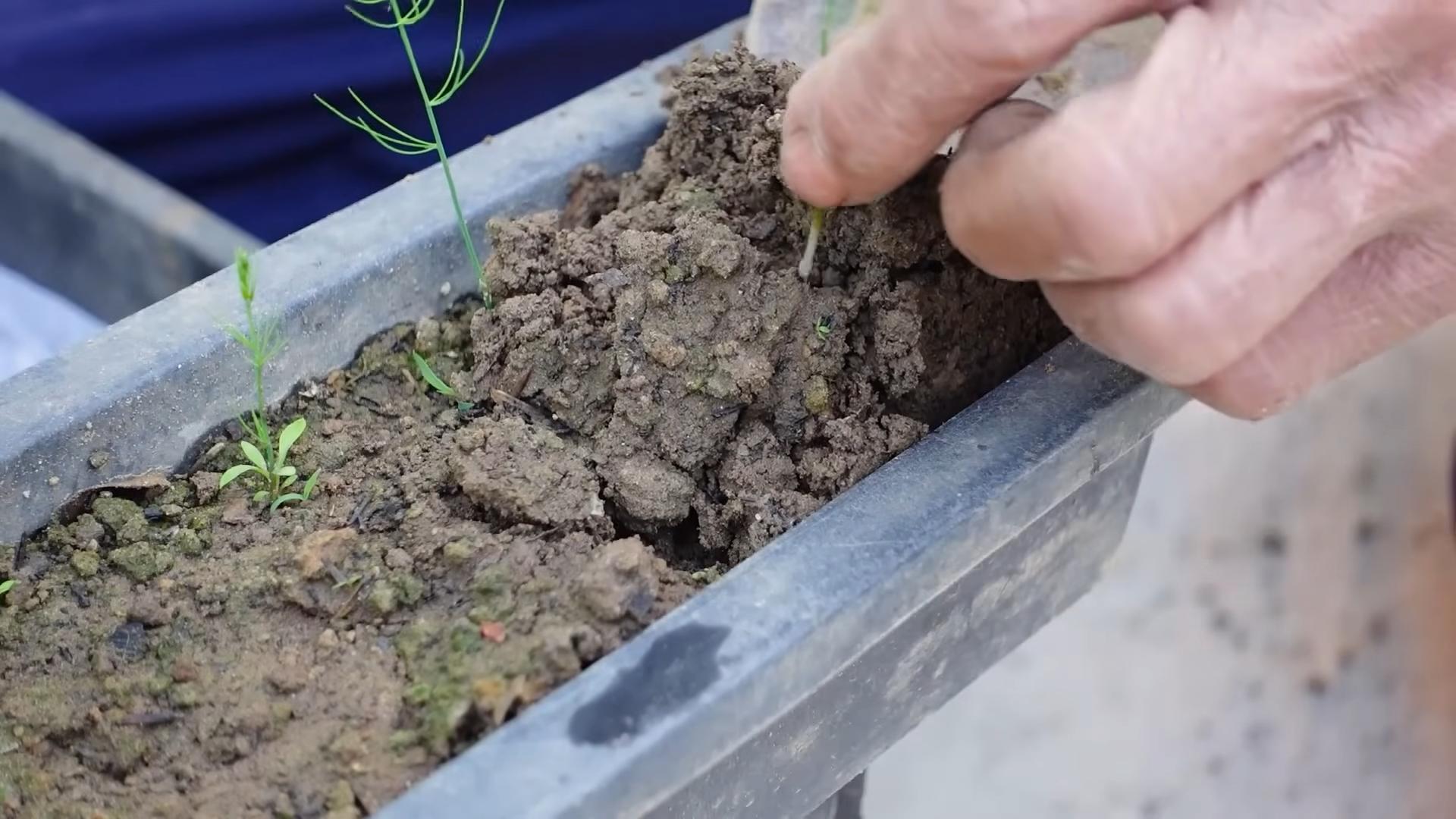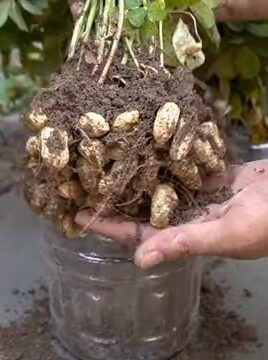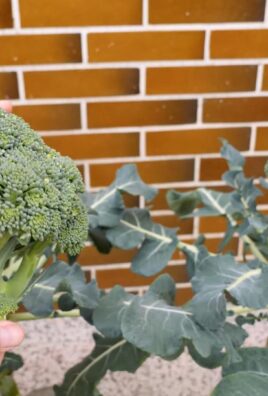Growing Asparagus at Home might seem daunting, but trust me, with a few simple tricks and a little DIY spirit, you can enjoy fresh, homegrown asparagus spears right from your backyard! Imagine stepping outside and harvesting your own delicious, nutrient-packed asparagus – no more trips to the grocery store for this springtime delicacy.
Asparagus has a rich history, dating back to ancient Greece and Rome, where it was prized for its medicinal properties and culinary delights. The Romans even cultivated it extensively! Today, asparagus remains a beloved vegetable worldwide, and growing asparagus at home allows you to connect with this long and fascinating agricultural tradition.
But why bother with the effort? Well, store-bought asparagus can be expensive and sometimes lacks the freshness and flavor of homegrown varieties. Plus, knowing exactly where your food comes from and how it’s grown is incredibly rewarding. This DIY guide will provide you with easy-to-follow steps and insider tips to successfully cultivate your own asparagus patch, even if you’re a complete beginner. We’ll cover everything from choosing the right variety and preparing your soil to harvesting techniques and pest control. Get ready to embark on a fulfilling gardening journey and savor the unparalleled taste of freshly picked asparagus!

Growing Asparagus: A Beginner’s Guide to a Lifetime of Delicious Spears
Asparagus! Just the word conjures up images of spring, fresh flavors, and maybe even a fancy dinner. But did you know you can grow your own asparagus patch and enjoy this delicacy for years to come? It’s true! While it takes a little patience upfront, the rewards are well worth the effort. I’m going to walk you through everything you need to know to get started.
Choosing the Right Asparagus Variety
First things first, let’s talk varieties. Not all asparagus is created equal, and choosing the right one for your climate and preferences is crucial. Here are a few popular and reliable choices:
* ‘Jersey Knight’: This is a widely recommended male hybrid variety known for its high yields, disease resistance, and adaptability to various climates. It’s a great choice for beginners.
* ‘Jersey Giant’: Similar to ‘Jersey Knight,’ but slightly larger spears. Also a male hybrid, so you don’t have to worry about unwanted seedlings.
* ‘Purple Passion’: A unique variety with beautiful purple spears that turn green when cooked. It’s sweeter and more tender than green varieties.
* ‘Millennium’: A Canadian variety known for its cold hardiness and high yields. Excellent for colder climates.
Consider your local climate and soil conditions when making your selection. Your local nursery can also provide valuable advice on which varieties thrive in your area.
Preparing Your Asparagus Bed: The Foundation for Success
Asparagus is a perennial, meaning it will live for many years in the same spot. Therefore, proper bed preparation is absolutely essential. Think of it as building a house – you need a solid foundation!
* Location, Location, Location: Asparagus needs at least 6-8 hours of direct sunlight per day. Choose a sunny spot in your garden. Also, consider that asparagus can grow quite tall (3-6 feet) when it ferns out, so avoid planting it where it will shade other plants.
* Soil Matters: Asparagus prefers well-drained, sandy loam soil with a pH between 6.5 and 7.0. If your soil is heavy clay or very sandy, you’ll need to amend it.
* Weed Control is Key: Asparagus hates competition from weeds. Thoroughly remove all weeds from the planting area before you begin. This includes digging out roots and rhizomes. You can also use a pre-emergent herbicide, but be sure to follow the instructions carefully.
* Amending the Soil: This is where the magic happens! Dig a trench about 12-18 inches wide and 12-18 inches deep. Mix in plenty of compost, well-rotted manure, or other organic matter to improve drainage and fertility. I like to add bone meal for phosphorus, which promotes strong root growth. Aim for a soil that is loose, crumbly, and rich in nutrients.
Planting Your Asparagus Crowns: Giving Them a Head Start
Asparagus is typically grown from crowns, which are one-year-old dormant plants. You can purchase crowns from nurseries or online retailers.
* Timing is Everything: The best time to plant asparagus crowns is in early spring, as soon as the soil can be worked.
* Soaking the Crowns: Before planting, soak the crowns in water for about an hour to rehydrate them.
* Creating a Ridge: In the bottom of your prepared trench, create a small ridge of soil down the center. This will help with drainage and allow the roots to spread out.
* Spacing the Crowns: Place the asparagus crowns on the ridge, spacing them about 12-18 inches apart. The crowns should be positioned with the buds (the small, pointy growths) facing upwards.
* Spreading the Roots: Gently spread the roots out around the crown, making sure they are not tangled or cramped.
* Covering the Crowns: Cover the crowns with about 2-3 inches of soil. Water thoroughly.
* Gradual Filling: As the asparagus spears emerge, gradually fill in the trench with soil. This will encourage the crowns to develop a strong root system. By the end of the first growing season, the trench should be completely filled in.
Caring for Your Asparagus Patch: Nurturing Your Investment
Once your asparagus is planted, it’s important to provide proper care to ensure healthy growth and abundant harvests in the years to come.
* Watering: Asparagus needs consistent moisture, especially during the first year. Water deeply whenever the soil feels dry to the touch. Avoid overwatering, which can lead to root rot.
* Fertilizing: Asparagus is a heavy feeder. Fertilize in early spring with a balanced fertilizer, such as 10-10-10. You can also side-dress with compost or well-rotted manure throughout the growing season.
* Weed Control: Continue to keep your asparagus patch free of weeds. Hand-pull weeds regularly, or use a layer of mulch to suppress weed growth.
* Mulching: Mulch helps to retain moisture, suppress weeds, and regulate soil temperature. Use organic mulches such as straw, wood chips, or shredded leaves.
* Fern Management: After the harvest season, allow the asparagus ferns to grow and mature. These ferns are essential for replenishing the plant’s energy reserves for the following year. In late fall or early winter, after the ferns have turned brown, cut them back to about 2 inches above the ground.
Harvesting Your Asparagus: The Sweet Reward
Patience is key when it comes to harvesting asparagus. You’ll need to wait at least two years after planting before you can start harvesting. This allows the plants to establish a strong root system.
* Year 1 & 2: No Harvesting! Resist the urge to harvest any spears during the first two years. This is crucial for the long-term health and productivity of your asparagus patch.
* Year 3: A Light Harvest: In the third year, you can harvest for a short period, about 2-3 weeks.
* Year 4 and Beyond: Full Harvest: From the fourth year onwards, you can harvest for a longer period, typically 6-8 weeks.
* Harvesting Technique: Harvest the spears when they are about 6-8 inches tall and the tips are still tightly closed. Use a sharp knife to cut the spears at ground level.
* Harvesting Frequency: Harvest spears every day or every other day during the peak harvest season.
* Knowing When to Stop: Stop harvesting when the spears become thin and spindly. This indicates that the plants are starting to exhaust their energy reserves.
Dealing with Asparagus Pests and Diseases
Asparagus is generally a relatively pest-free crop, but there are a few potential problems to watch out for.
* Asparagus Beetles: These small, colorful beetles can damage asparagus spears and ferns. Hand-pick them off the plants, or use an insecticidal soap or neem oil.
* Asparagus Rust: This fungal disease can cause orange or reddish-brown pustules on the ferns. Choose rust-resistant varieties, and ensure good air circulation around the plants.
* Crown Rot: This fungal disease can cause the crowns to rot. Avoid overwatering, and ensure good drainage.
Extending Your Asparagus Season
Want to enjoy fresh asparagus for even longer? Here are a few tips:
* Succession Planting: Plant different varieties of asparagus that mature at different times.
* Cold Frames: Use cold frames to protect your asparagus patch from frost and extend the growing season.
* Forcing Asparagus: You can force asparagus indoors during the winter months for a fresh supply of spears.
Enjoying Your Homegrown Asparagus
Congratulations! You’ve successfully grown your own asparagus. Now it’s time to enjoy the fruits (or rather, spears) of your labor. Asparagus is delicious steamed, roasted, grilled, or sautéed. It’s also a great addition to salads, soups, and omelets.
Growing asparagus takes a little time and effort, but it’s a rewarding experience that will provide you with fresh, delicious spears for many years to come. So, get out there and start planting! I promise, you won’t regret it.

Conclusion
So, there you have it! Growing asparagus at home isn’t just a gardening project; it’s an investment in years of delicious, fresh harvests right from your backyard. We’ve walked through the process, from selecting the right crowns to nurturing them into productive spears. The initial patience required is undoubtedly worth the reward of plucking your own tender asparagus each spring.
Why is this DIY trick a must-try? Because store-bought asparagus simply can’t compare to the flavor and freshness of homegrown. Imagine the satisfaction of serving a meal featuring asparagus you cultivated yourself, knowing exactly where it came from and how it was grown. Plus, you’ll be saving money in the long run, as established asparagus beds can produce for 15-20 years or even longer!
But the benefits extend beyond just taste and cost savings. Gardening is a fantastic way to connect with nature, reduce stress, and get some exercise. Growing asparagus, in particular, teaches patience and provides a unique sense of accomplishment. It’s a project that the whole family can enjoy, from planting the crowns to harvesting the spears and creating delicious recipes together.
Looking for variations? Consider companion planting! Asparagus thrives alongside certain herbs and vegetables. Tomatoes, basil, and parsley are excellent choices that can help deter pests and improve the overall health of your asparagus bed. You can also experiment with different asparagus varieties. ‘Jersey Knight’ is a popular choice for its high yield and disease resistance, while ‘Purple Passion’ offers a unique color and slightly sweeter flavor. Don’t be afraid to try different methods of weed control, such as mulching with straw or using organic herbicides.
We encourage you to take the plunge and start your own asparagus patch. It may seem daunting at first, but with a little planning and effort, you’ll be enjoying fresh, homegrown asparagus for years to come. Remember to choose a sunny location with well-drained soil, prepare the bed properly, and be patient as your asparagus establishes itself.
And most importantly, we want to hear about your experiences! Share your tips, tricks, and challenges in the comments below. What varieties are you growing? What companion plants have you found most effective? What are your favorite asparagus recipes? Let’s create a community of asparagus enthusiasts and learn from each other. Your insights could help other gardeners succeed in their own asparagus-growing endeavors. So, get your hands dirty, embrace the process, and enjoy the bounty of your own homegrown asparagus!
Frequently Asked Questions (FAQ)
1. How long does it take to harvest asparagus after planting?
Patience is key when growing asparagus! While you might be eager to harvest those first spears, it’s crucial to allow the plants to establish themselves. Generally, you shouldn’t harvest any asparagus in the first year after planting crowns. This allows the plants to focus on developing strong root systems. In the second year, you can harvest lightly for a few weeks. By the third year, you can enjoy a full harvest season, typically lasting 6-8 weeks in the spring. Remember, over-harvesting young plants can weaken them and reduce their long-term productivity.
2. What is the best time of year to plant asparagus crowns?
The best time to plant asparagus crowns is typically in the early spring, as soon as the ground can be worked. This allows the plants to establish themselves before the heat of summer arrives. However, in warmer climates, you can also plant asparagus in the fall. The key is to avoid planting when the ground is frozen or excessively wet. When you receive your asparagus crowns, inspect them carefully and soak them in water for a few hours before planting to rehydrate them.
3. What kind of soil is best for growing asparagus?
Asparagus thrives in well-drained, sandy loam soil with a pH between 6.5 and 7.5. Good drainage is essential, as asparagus roots can rot in soggy conditions. Before planting, amend the soil with plenty of organic matter, such as compost or well-rotted manure. This will improve drainage, fertility, and water retention. If your soil is heavy clay, consider adding sand or gravel to improve drainage. A soil test can help you determine the pH and nutrient levels of your soil and guide you in making necessary amendments.
4. How much sun does asparagus need?
Asparagus needs at least 6-8 hours of direct sunlight per day to thrive. Choose a location in your garden that receives full sun throughout the growing season. Insufficient sunlight can result in weak, spindly spears and reduced yields. If you live in a particularly hot climate, some afternoon shade may be beneficial, but avoid planting asparagus in areas that are shaded for most of the day.
5. How do I fertilize asparagus?
Asparagus is a heavy feeder and benefits from regular fertilization. In the spring, before the spears emerge, apply a balanced fertilizer, such as 10-10-10, according to the package directions. You can also side-dress the plants with compost or well-rotted manure. After the harvest season, fertilize again to help the plants replenish their energy reserves for the following year. Avoid over-fertilizing, as this can lead to excessive foliage growth at the expense of spear production.
6. How do I control weeds in my asparagus bed?
Weeds can compete with asparagus for nutrients and water, so it’s important to keep your asparagus bed weed-free. Hand-pulling weeds is the most effective method, especially when the weeds are small. Mulching with straw, wood chips, or other organic materials can also help suppress weed growth. Avoid using herbicides unless absolutely necessary, as they can damage the asparagus plants. If you do use herbicides, choose a product that is specifically labeled for use on asparagus and follow the instructions carefully.
7. What are some common asparagus pests and diseases?
Asparagus beetles are a common pest that can damage the spears and foliage. Hand-picking the beetles and their larvae is an effective control method. Asparagus rust is a fungal disease that can cause orange pustules on the stems and foliage. Planting rust-resistant varieties and ensuring good air circulation can help prevent rust. Other potential pests and diseases include aphids, cutworms, and crown rot. Regularly inspect your plants for signs of problems and take appropriate action as needed.
8. How do I harvest asparagus?
Harvest asparagus spears when they are about 6-8 inches tall and the tips are still tightly closed. Use a sharp knife or asparagus knife to cut the spears at ground level. Avoid damaging the crown or surrounding spears. Harvest spears every day or two during the peak of the harvest season. As the harvest season progresses, the spears will become thinner and less tender. When the spear production declines, stop harvesting and allow the plants to fern out.
9. What do I do with asparagus after the harvest season?
After the harvest season, allow the asparagus plants to fern out and grow tall. This allows them to photosynthesize and store energy for the following year. Do not cut back the ferns until they turn yellow or brown in the fall. At that point, you can cut them back to a few inches above the ground. Remove any fallen foliage to prevent the spread of disease.
10. Can I grow asparagus in containers?
Yes, you can grow asparagus in containers, but it requires a large container (at least 18 inches in diameter and 24 inches deep) and well-drained potting mix. Choose a sunny location and water regularly. Container-grown asparagus may not be as productive as asparagus grown in the ground, but it can be a good option for gardeners with limited space. Remember to fertilize regularly and protect the plants from frost in the winter.




Leave a Comment